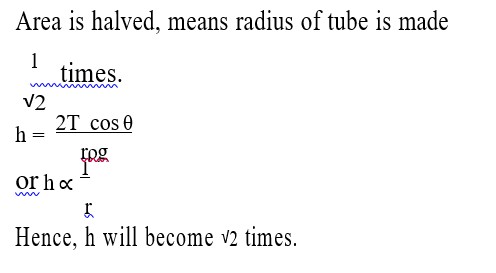A vessel of volume V contains a mixture of 1 mole of Hydrogen and 1 mole of Oxygen (both considered as ideal). Let f1(v)dv, denote the fraction of molecules with speed between v and (v + dv) with f2(v)dv, similarly for oxygen. Then
(a) f1(v) + f2(v) = f(v) obeys the Maxwell’s distribution law
(b) f1(v), f2(v)will obey the Maxwell’s distribution law separately
(c) Neither f1(v), nor f2(v) will obey the Maxwell’s distribution law
(d) f2(v) and f1 (v) will be the same
A vessel of volume V contains a mixture of 1 mole of Hydrogen and 1 mole of Oxygen (both considered as ideal). Let f1(v)dv, denote the fraction of molecules with speed between v and (v + dv) with f2(v)dv, similarly for oxygen. Then
(a) f1(v) + f2(v) = f(v) obeys the Maxwell’s distribution law
(b) f1(v), f2(v)will obey the Maxwell’s distribution law separately
(c) Neither f1(v), nor f2(v) will obey the Maxwell’s distribution law
(d) f2(v) and f1 (v) will be the same
-
1 Answer
-
This is a multiple choice answer as classified in NCERT Exemplar
(b) For a function f (v), the number of molecules n=f (v) which are having speeds between v and v+dv
So f1 (v) and f2 (v) will obey’s maxwell distribution law
Taking an Exam? Selecting a College?
Get authentic answers from experts, students and alumni that you won't find anywhere else
Sign Up on ShikshaOn Shiksha, get access to
- 66k Colleges
- 1.2k Exams
- 680k Reviews
- 1800k Answers



